For as many summers as I can recall, I have had one pair of American Goldfinches nesting in my yard.
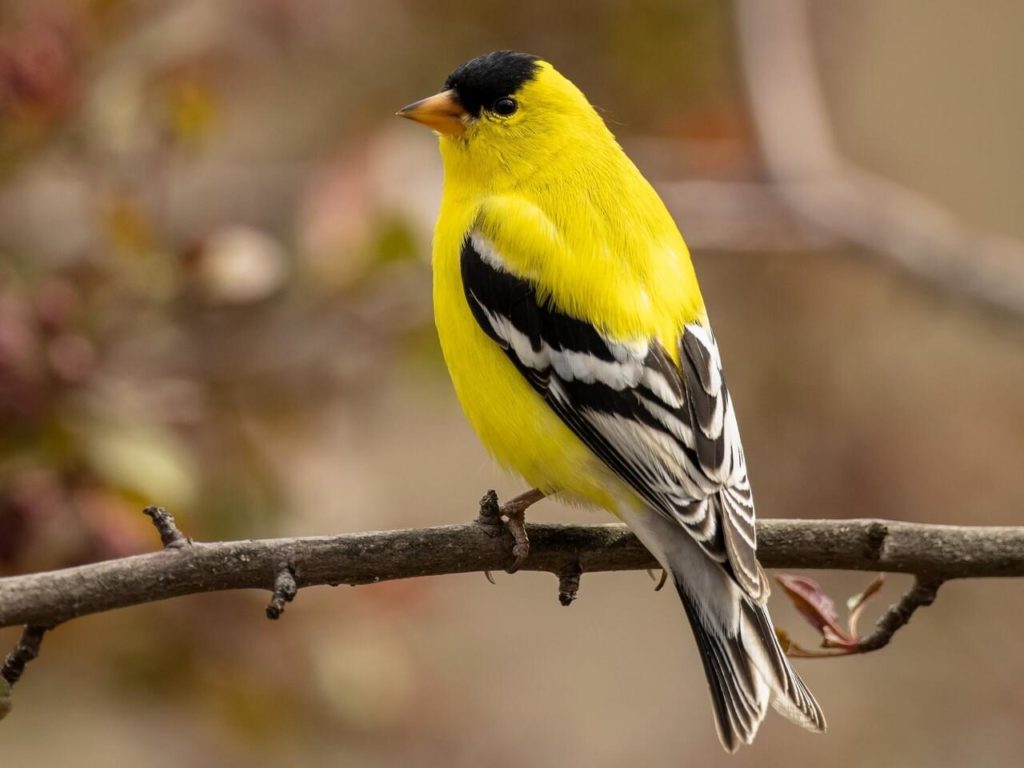
The male displays over the open space above my back yard, singing as he flies and then alighting in the birch trees at my neighbors. All of the activity to and from the grove of birches by both the male and female goldfinches would be a strong indication that they choose it for their nest site.
When the female goldfinch is on the nest it is obvious, as only her male will be coming to my feeder. In fact, he comes more frequently as he brings food to her as she sits on the nest, incubating the eggs. Once the eggs hatch, she comes to the feeder in a few weeks, while the male watches the young. Both parents take seed to their young, one of the few birds that do not feed insects to their offspring. Natural seeds from plants are a staple in the goldfinches’ diet.
Within a few more weeks, I am able to enjoy the fledged goldfinches as they follow Dad around, landing near him and fluttering their wings accompanied by incessant, sweet chirps.
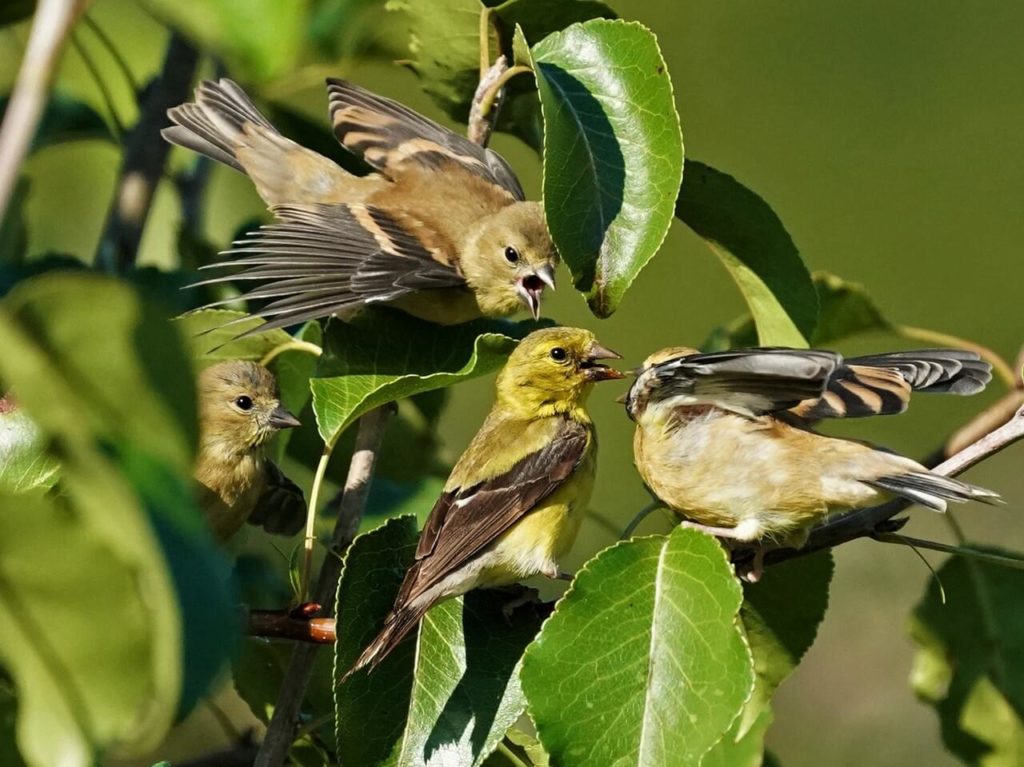
This year it’s a completely different situation as I have had three male Goldfinches consistently all summer. I can’t be sure if the groups of fledglings are with different males although I can say that one group is four fledglings and the other group is five. Hmmm.
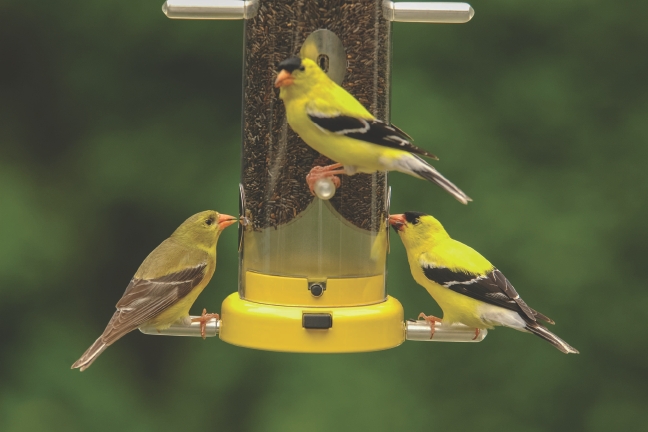
What changed that my feeding station is so different this year? The answer became very apparent the more that I observed bird behavior in my yard. I planted a native habitat that was successful beyond what I could have imagined. The planting took place in June of 2020 and the mature plants have provided a bounty of seeds for the Goldfinches to eat.
I especially love to check out the flowers with my binoculars as I am amazed at how well the goldfinches blend in with the plants. Perfect camouflage for a bird that is out in the open – they need to be invisible to raptors.
If you are looking to change your habitat to make it irresistible for Goldfinches, here are a few suggestions –
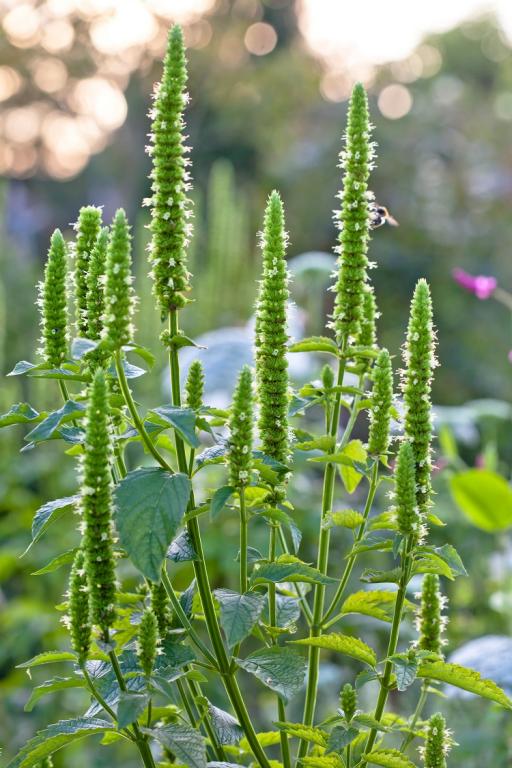
Agastache nepetoides- (giant yellow hyssop) has been a constant source of seeds for the Goldfinches since July. A large stand of this native plant was placed in front of the established cedars, an appropriate place given their height of 3 to 8 feet.
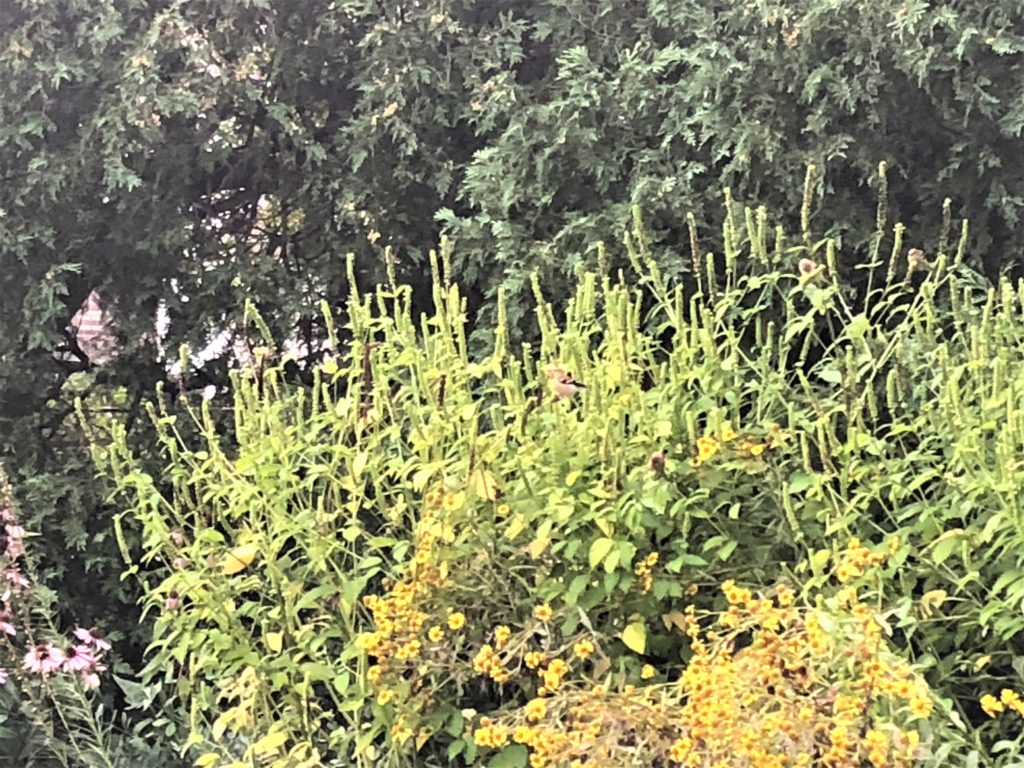
From July to September they will be in bloom, an added benefit, as they suit our native pollinators. This native plant is characterized as easily grown in average, medium, or well-drained soil in part shade to full sun. I love this description from Missouri Botanical Garden – “A bold plant that masses well in the perennial border, native wildflower area, woodland or butterfly garden.” It is also planted in an area behind my garage that has been dedicated to pollinators. Of note, the bitterness of its leaves make Agastache nepetoides deer resistant.
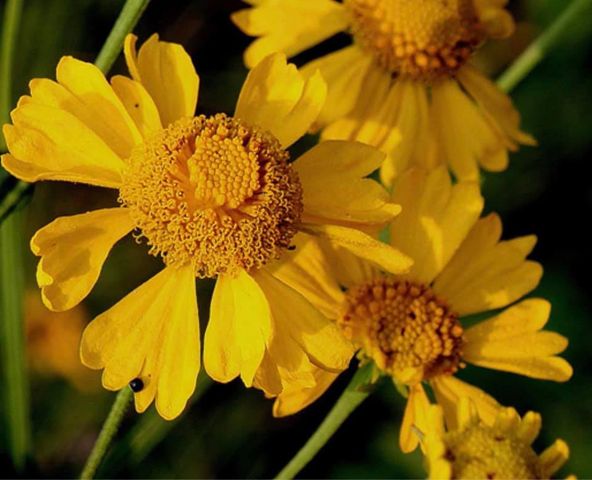
Helenium atumnale – (sneezeweed) was added in a layer in front of the Agastache nepetoides. The large and numerous daisy-like, yellow flowers of Helenium autumnale can provide welcome color in late summer and autumn when many other blossoms have disappeared. Sneezeweed prefers full to partial sun and wet to wet-medium soils that are average to rich. Despite its common name, it presents no problems for allergy sufferers, its’ pollen is distributed by insects, not wind. Sneezeweed is one of the host plants of the Dainty Sulphur butterfly.
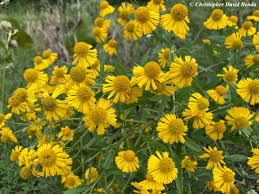
The plants often become so tall they need staking or other support. Alternatively, they can be cut back in early summer to force shorter, more-branched flowering heads. I have experienced this exact situation as one group of this flower was cut back and has stayed shorter and a great compliment to a different group of cedars growing behind the sneezeweed. The other group were not cut back and they have flopped, as predicted. Either way, they attract large groups of goldfinch, many of which go from the plant seeds to the feeder and back. Best to leave the plant standing all winter so that the Goldfinch can continue to feed on the seed heads.
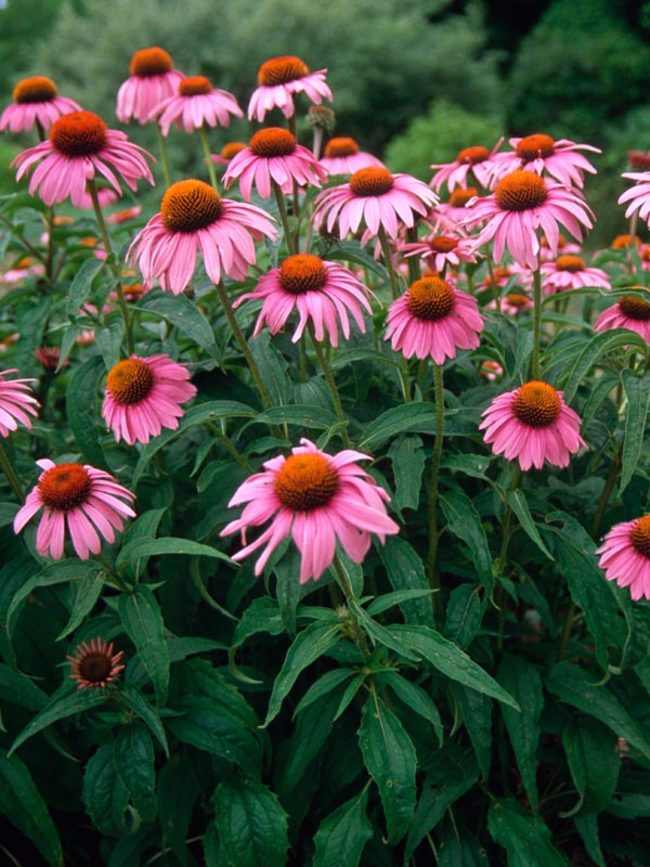
Echinacea purpurea – (purple coneflower) – an absolute favorite and a consistently attractive seed plant for Goldfinches. Extra bonus is that it is attractive to Hummingbirds as well ! Easily grown in average, dry to medium, well-drained soil in full sun to part shade. An adaptable plant that is tolerant of drought, heat, humidity and poor soil.
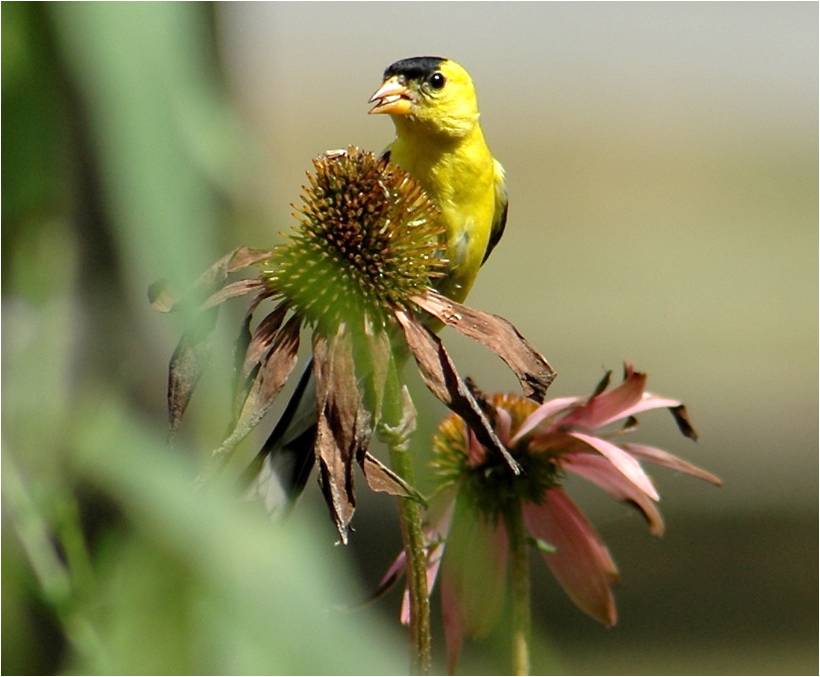
The long bloom times from June through August are a plus and no fall clean-up is needed, as the seed heads provide food for finches all winter long.
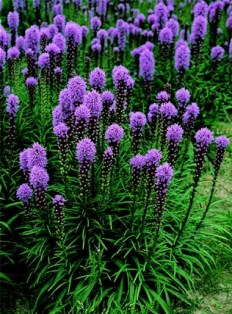
Liatris spicata and Liatris aspera – Marsh blazing star and Rough blazing star – these flowers blend beautifully with the Echinacea purpurea, the Helenium autumnale and the Agastache nepetoides. These liatris were planted in many places and its so fun to watch the goldfinches land on the seed stalks and tip upside down as they eat the seeds. These plants flower from July through August/September. Easily grown in average, medium, soils in full sun. Spicata prefers a moist soil whereas aspera is drought tolerant.
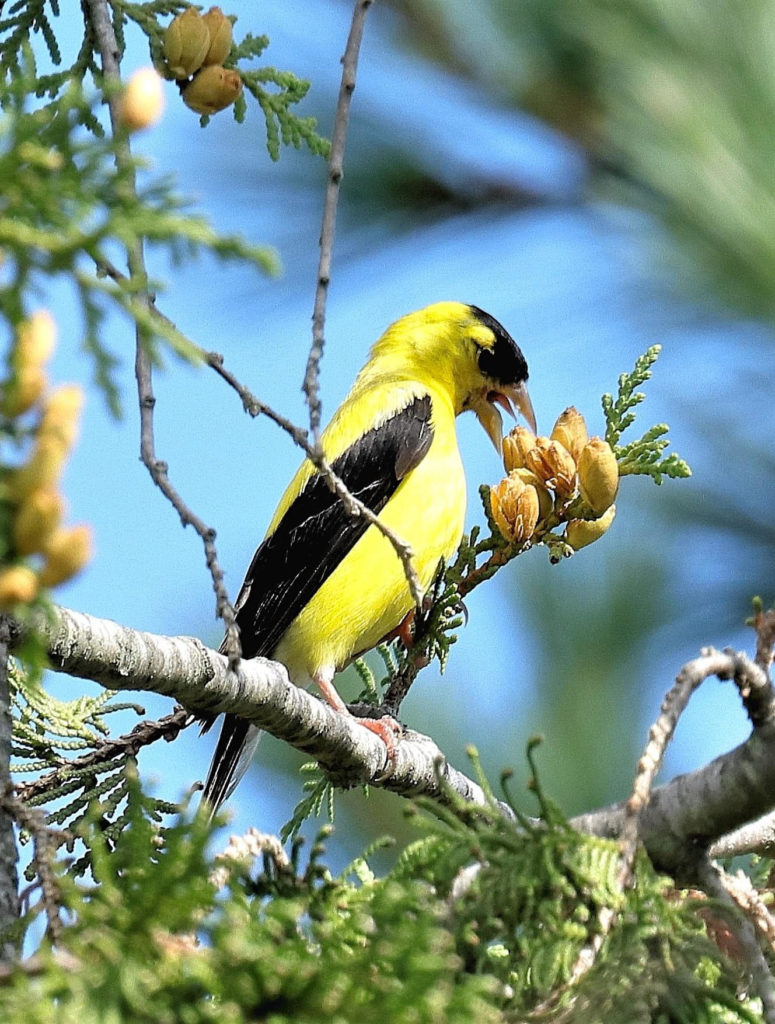
Perhaps the most surprising observation was a Goldfinch eating the seeds of the cedars that are the basic foundation plants in my backyard. Certainly an important evergreen for shelter and food.
Have fun adding native plants in your yard to improve the habitat
and welcome even more finches !
